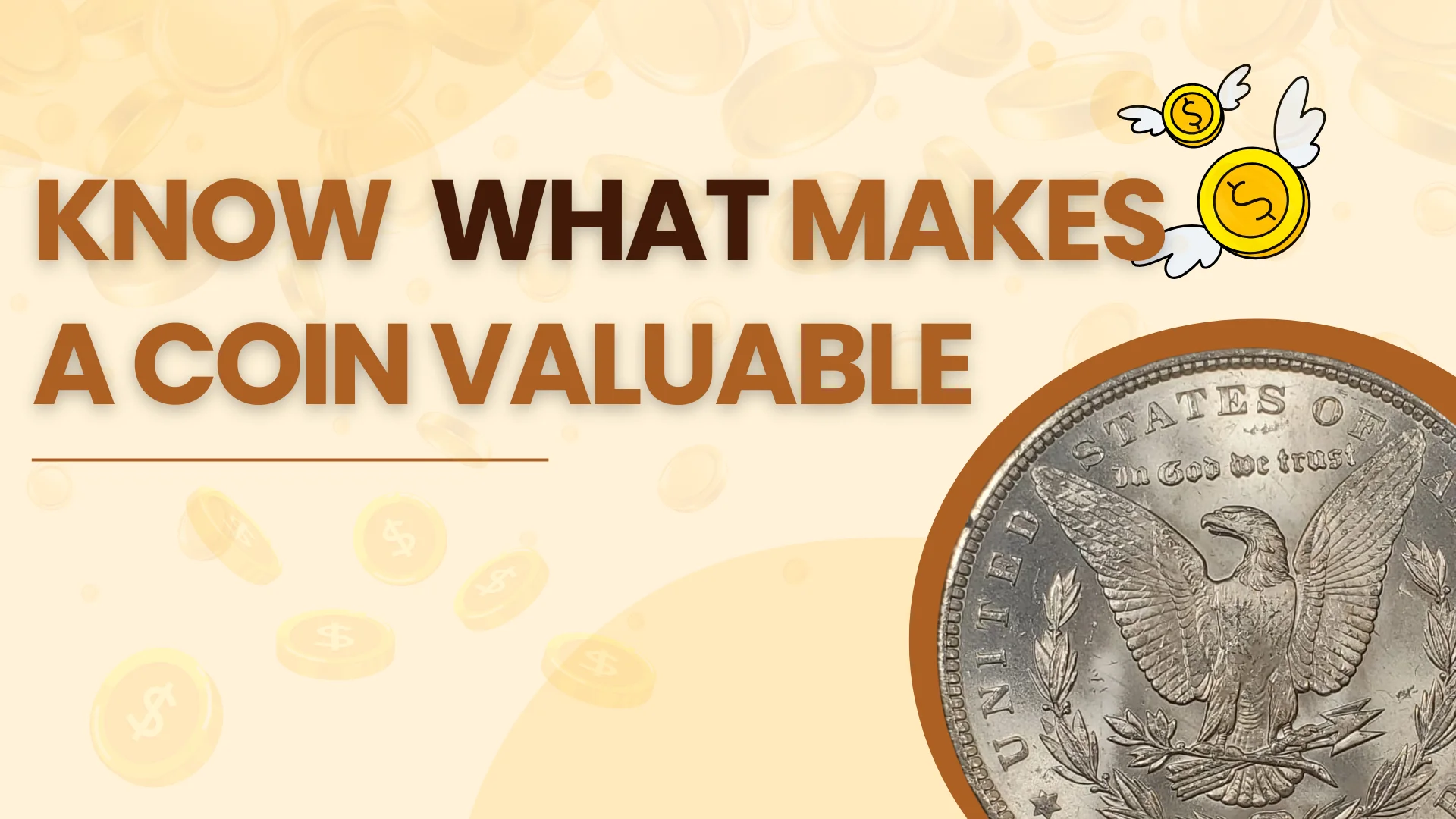Have you ever discovered an old coin and wondered about its worth? Whether you’re sorting through inherited old American coins or starting a collection, understanding what determines coin values can help you identify potential treasures. From antique coins worth fortunes to common old US coins, let’s explore the fascinating factors that make certain coins particularly valuable.
Understanding the Basics of Coin Value
Rarity: The Golden Rule of Coin Values
Rarity stands as perhaps the most crucial factor in determining how to check value of old coins. When we talk about rarity, we’re looking at two primary aspects: the original mintage numbers and surviving examples.
The number of coins originally produced greatly influences their current value. For example, the 1909-S VDB Lincoln Cent is highly valuable because only 484,000 were minted – a tiny number compared to the millions typically produced.
Sometimes, even coins with higher mintage numbers become rare because few survive. Wars, melting campaigns, and natural disasters have all contributed to making certain old coin market prices higher due to scarcity.
Condition: The Make-or-Break Factor
When determining old coins, condition often matters more than age. Professional graders use a detailed scale ranging from Poor (P-1) to Perfect Mint State (MS-70). A coin’s grade can make the difference between a few dollars and thousands in the old coin selling price list.
For instance, a common-date Morgan Silver Dollar might be worth $30 in circulated condition but could command $300 or more in pristine mint state. The old coin market particularly values pieces that show minimal wear and retain their original lustre.
Historical Significance: Adding Value Through Story
The historical context can significantly impact antique coins. Coins that represent important moments in history often command premium prices in the market.
Really old coins from America’s colonial period often carry significant value due to their connection to the nation’s founding, even if they’re not in perfect condition. The stories behind these pieces, whether they were minted during significant historical events or represent important changes in American coinage, can dramatically influence their worth in today’s market.
Metal Content: The Base Value
The material composition of coins provides a fundamental value floor that helps establish their worth in the old coin market price listings. Gold coins typically maintain significant value even if damaged, while antique silver coins’ value often remains at least equal to their precious metal content.
Even coins made from base metals like copper and nickel can command premium prices if they’re rare or historically significant. The metal content becomes particularly important when evaluating very old coins, as many were made from precious metals that carry inherent value.
Mint Marks: Small Letters, Big Impact
When learning how to know the value of old coins, understanding mint marks becomes crucial. These tiny letters indicate where a coin was made, and their presence can significantly affect value.
Philadelphia-minted coins often show no mint mark, while pieces from Denver, San Francisco, Carson City, and New Orleans carry their respective identifiers. Carson City Morgan Dollars, for instance, often command significant premiums over those from other mints due to their relative scarcity and the historical significance of the Carson City mint.
Special Characteristics That Increase Value
Error coins represent an intriguing segment of the market. Mistakes in the minting process can make coins extremely valuable, with some error pieces commanding extraordinary prices in the coin value checker market.
These unique characteristics might include double dies, off-centred strikes, or missing elements. The 1955 Double Die Lincoln Cent stands as a famous example, worth thousands due to its dramatic doubling.
Researching Your Coin's Value
The process of determining your old coins begins with careful examination and research. Start by identifying the type of coin you have, noting its date and mint mark, and assessing its condition.
Many collectors find success using online coin value finder tools and consulting current market guides. For potentially valuable pieces, professional grading services can provide authenticated assessments that help establish firm values in the marketplace.
Protecting Your Investment
Proper preservation becomes crucial once you discover you have valuable old coins in hand. Never clean your coins, as this can severely reduce their value in the old coin market value listings.
Handle them carefully by their edges, ideally using cotton gloves, and store them in appropriate holders in climate-controlled environments. Professional dealers can often spot-clean coins immediately, which typically results in significantly lower values.
Understanding Market Dynamics
The coin market operates on supply and demand principles, with values changing based on collector interest and economic conditions. Not all very old coins are automatically valuable – some ancient Roman coins sell for less than more recent, rare American coins.
Similarly, not every error or variation commands a premium price. The key to understanding coin values lies in recognizing how rarity, condition, historical significance, and market demand work together to establish worth.
Final Tips for Maximizing Your Coins' Worth
Understanding what makes a coin valuable requires considering multiple factors, from mintage numbers to historical significance. Whether you’re dealing with old American coins or international pieces, knowledge is key to making informed decisions about collecting or selling.
The old coin price book market continues to evolve, making it essential to stay informed about current trends and values.
Remember that the coin market changes constantly, with values fluctuating based on collector interest and market conditions. For the most accurate assessment of your coins worth money, consider consulting with professional dealers or getting important pieces certified by recognized grading services.
Whether you’re a serious collector or just curious about that jar of old coins in your drawer, understanding these factors will help you make better decisions about your numismatic treasures. When you need expert guidance on coin values, the experienced team at Mountain View US and Foreign Coins can provide professional evaluations and current market insights.

